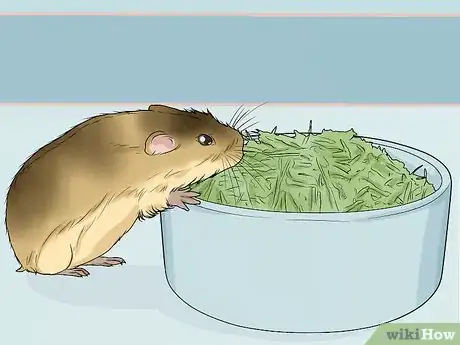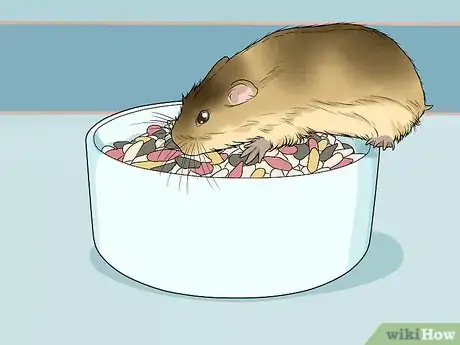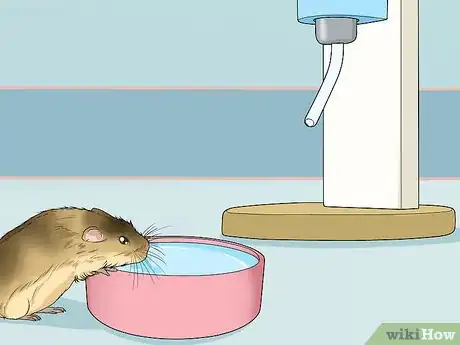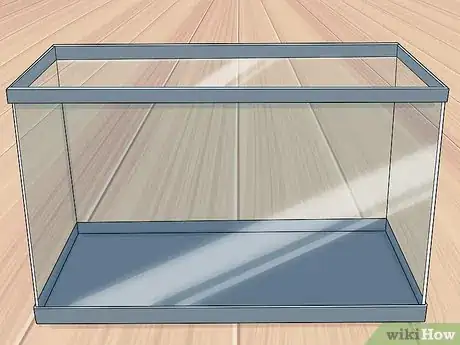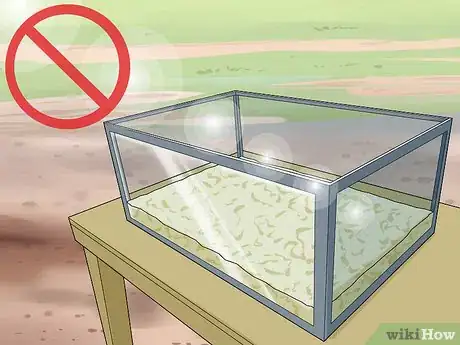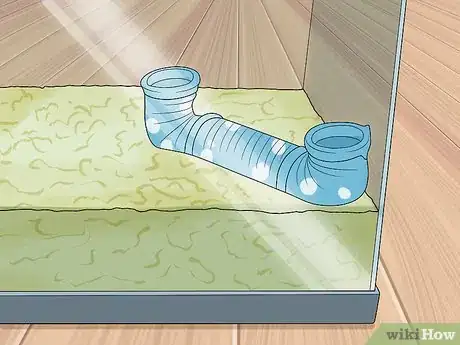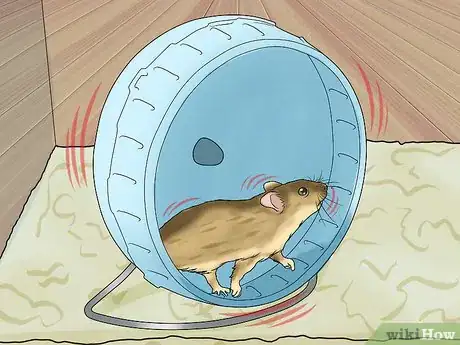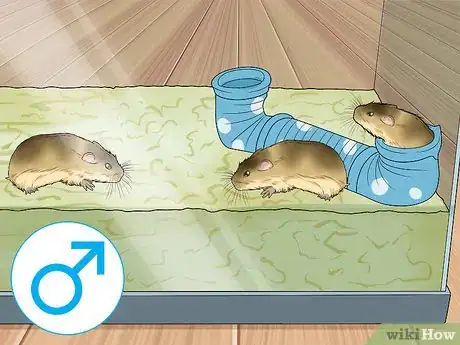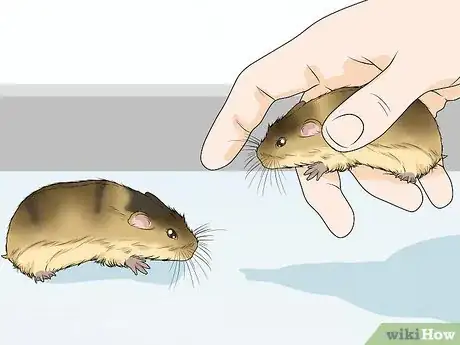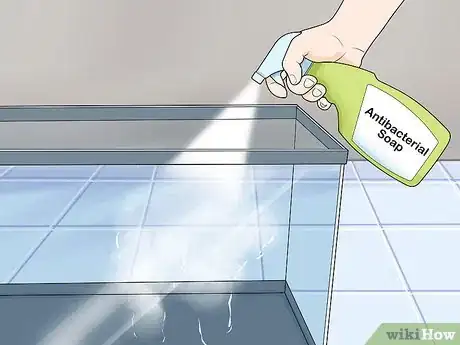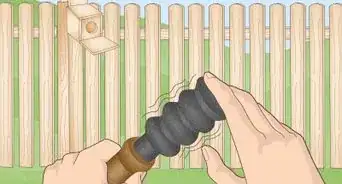This article was co-authored by Pippa Elliott, MRCVS. Dr. Elliott, BVMS, MRCVS is a veterinarian with over 30 years of experience in veterinary surgery and companion animal practice. She graduated from the University of Glasgow in 1987 with a degree in veterinary medicine and surgery. She has worked at the same animal clinic in her hometown for over 20 years.
wikiHow marks an article as reader-approved once it receives enough positive feedback. In this case, 96% of readers who voted found the article helpful, earning it our reader-approved status.
This article has been viewed 45,974 times.
Lemmings are interesting and cute pets to have. While they’re somewhat rare in the Americas, lemmings are popular pets in parts of Europe. However, unlike other rodents and similarly sized animals, lemmings need a very specific diet to thrive. In addition, they have other needs you must attend to safeguard their health. Ultimately, by feeding lemmings appropriately, creating a good habitat, and paying attention to their health and safety, you’ll be able to care for them as pets.
Steps
Feeding Lemmings
-
1Feed them leafy vegetables and grasses. In the wild, grasses make up the vast majority of a lemming’s diet. As a result, these same types of food should make up about three quarters of their diet in captivity. To feed them, provide about a cup a day (.24 l) of finely chopped (and rinsed) alfalfa, cabbage, kale, broccoli, and spinach. Supplement this with a generous portion of timothy hay.[1]
- Don’t give them fruits.
-
2Give your lemmings seeds or pre-formulated food. In addition to grasses and leafy vegetables, your lemmings may benefit from a seed mix or pre-formulated food you can buy at a pet store. Seeds and formulated food will add diversity to your lemmings’ diet and help them thrive.
- Consult your veterinarian before feeding your lemmings a pre-formulated mix that is not intended for lemmings.
- Follow the instructions on the product to determine how much pre-formulated food you should give your lemming. In many cases, this will end up being less than a quarter of a cup (.6 l).
Advertisement -
3Restrict their intake of sugar. Lemmings are sugar intolerant. This means that their bodies are unable to process large amounts of sugar. If you give your lemming a lot of sugar, it could develop diabetes and die. As a result, you need to be very careful about what you feed your lemming.
- Avoid giving them commercial food intended for mice, hamsters, or other rodents. In addition, avoid giving them hamster treats and dried fruits.
- Consult your vet if you have concerns about a specific food and its sugar content.[2]
-
4Provide a lot of water. While they’re small animals, lemmings drink a relatively large quantity of water. Without water, your lemming won’t thrive in captivity. To ensure they have enough water, place both a water bowl and a bottle in their habitat. Change the water in the bowl every day and make sure the bottle is full.[3]
Creating a Habitat
-
1Get at least a 15 gallon (57 liters) terrarium. Terrariums smaller than this will not provide enough room for your lemming. This is important, as they need a lot of room to move around and stay healthy. When purchasing your habitat, remember:
- Typically hamster cages won’t work for lemmings, as the lemmings will be able to escape through the wires of the cage.
- Glass enclosures are okay, if they have a secure wire or mesh top that allows air circulation.
- The more lemmings in the habitat, the larger it should be. As a rule, go for 10 to 15 gallons (38 liters to 57 liters) per lemming.
-
2Provide at least 8 inches (20 cm) of substrate. As a burrowing rodent, lemmings demand a lot of substrate to thrive. Substrate is the material you’ll line the bottom of the habitat with. Consider placing 4 inches (10 cm) of aspen wood shavings on the bottom of the habitat. Then, place 4 inches (10 cm) of hay on top.
- Lemmings will use hay to create a nest and eat.
- If you notice your wood shavings or hay are damp, you should change them out immediately. This could cause health problems for your lemmings.
-
3Keep the habitat out of direct sunlight. When situating the terrarium, make sure that it doesn’t get any direct sunlight. Direct sunlight could raise the temperature of the habitat. This is important, as lemming are used to colder arctic temperatures and will not thrive in very warm conditions.
- The ideal temperature for lemmings is between 55 and 75 degrees Fahrenheit (13 and 24 degrees Celsius). Lemmings should never be kept in temperatures warmer than 80 degrees Fahrenheit (27 degrees Celsius).
Providing Toys and Entertainment
-
1Set up a series of hamster tubes. Much like gerbils and hamsters, lemmings will enjoy moving through their habitat in a network of tubes. Remember, though, the more lemmings you have, the larger your network of tubes should be. The tubes will allow younger and less assertive lemmings to stay away from older and more aggressive lemmings.
-
2Give your lemming a running wheel. Place a small, mouse-sized, running wheel in your lemming habitat. The wheel, in addition to hamster tubes, will create an outlet for your lemmings to exercise. In addition, it will keep them busy and contribute to their happiness.
-
3Provide something for your lemmings to chew. As rodents with molars that grow constantly, you need to provide your lemming with something they can chew and gnaw on. Without this, they may become destructive and could develop dental problems. Consider:
- Willow branches.
- Popsicle sticks.
- Twigs made from grasses.
- Commercially available chew sticks (if they are organic).
Attending to Health and Safety
-
1Keep several lemmings of the same sex together. Because many types of lemmings are social, they shouldn’t be kept by themselves in a habitat. Ultimately, you can house between 3 to 8 lemmings of the same sex in a single (properly sized) habitat.
- Don’t keep more than 1 male for every 2 or 3 female lemmings. Remember, though, keeping male and female lemmings together will result in baby lemmings.
- Consult your vet when determining how many and what type of lemmings to keep together.
- Verify that the breed of lemming you’re keeping is in fact social. For example, the common Steppe Lemming is very social. However, there are a couple (rare) breeds that are less social and may benefit from being housed in smaller numbers.
-
2Supervise unfamiliar lemmings. If you’re introducing a new lemming into your colony, you need to supervise its interaction with existing lemmings carefully. Your old lemmings may see the new lemming as a threat to their colony. When introducing a new lemming:
- Pick a neutral ground (not the habitat) to introduce lemmings.
- Introduce lemmings in a one-on-one basis. This way, each animal can interact with the new animal by themselves.
- When you finally place the new lemming into the habitat, watch it for several hours to make sure the other lemmings accept it.
-
3Clean the habitat. Use antibacterial soap to wash your habitat regularly. Depending on the number of lemmings, this should be done at least once a week. To do this, carefully place your lemmings in a temporary (and safe) cage, empty the terrarium (and throw out your substrate), and wash the terrarium and everything in it. Then, allow everything to dry before restoring your habitat.
-
4Bring your lemmings to the vet regularly. Take your lemmings to the vet every six months to a year. Your vet will be able to examine your lemmings and provide any medical care they may need. In addition, visit your vet if one of your lemmings ever gets sick. By seeking medical attention, you'll safeguard and prolong the life of your lemmings.
References
About This Article
To care for your pet lemming, feed it about a cup of leafy vegetables and grasses, such as cabbage, kale, and spinach, every day. While these should make up about 70 percent of your lemming’s diet, you should also provide about 30 percent seed mix or pre-formulated lemming food you can get from a pet store. Also, give it plenty of water, since lemmings drink a lot for their size. Lemmings need a lot of room to move around, so find a terrarium of at least 57 liters or 15 gallons. Line the terrarium floor with at least 8 inches of a substrate, since lemmings like to burrow. For more tips from our Veterinary co-author, including how to keep your lemming entertained in its habitat, read on!
